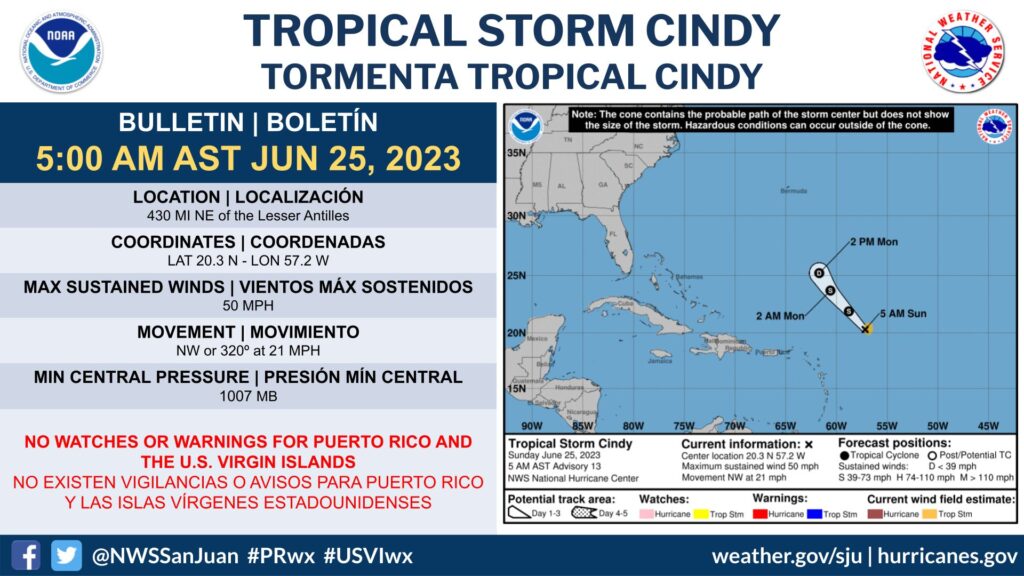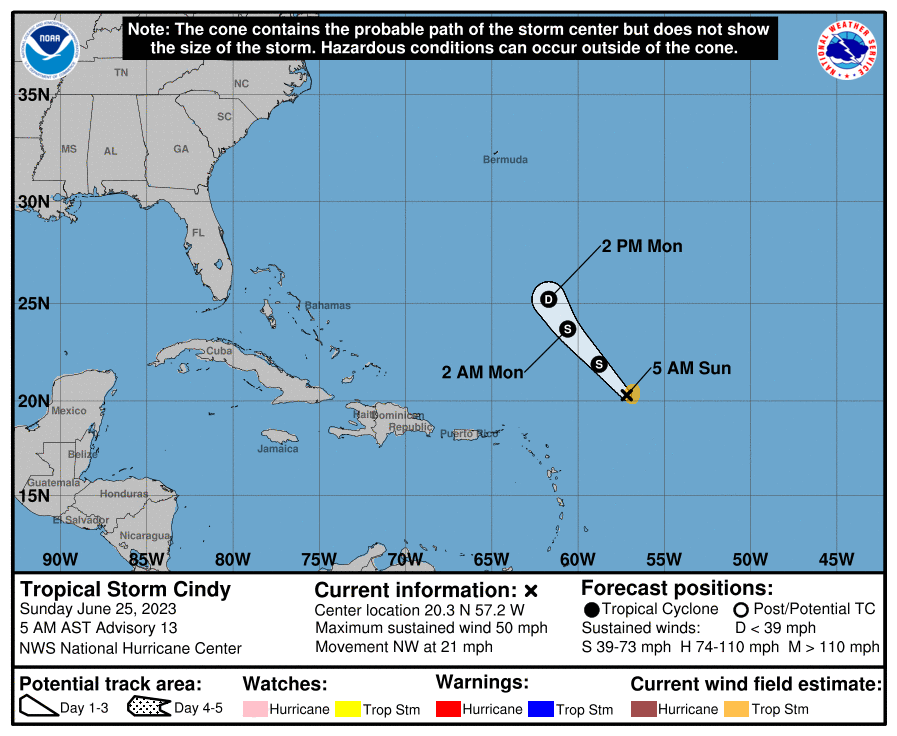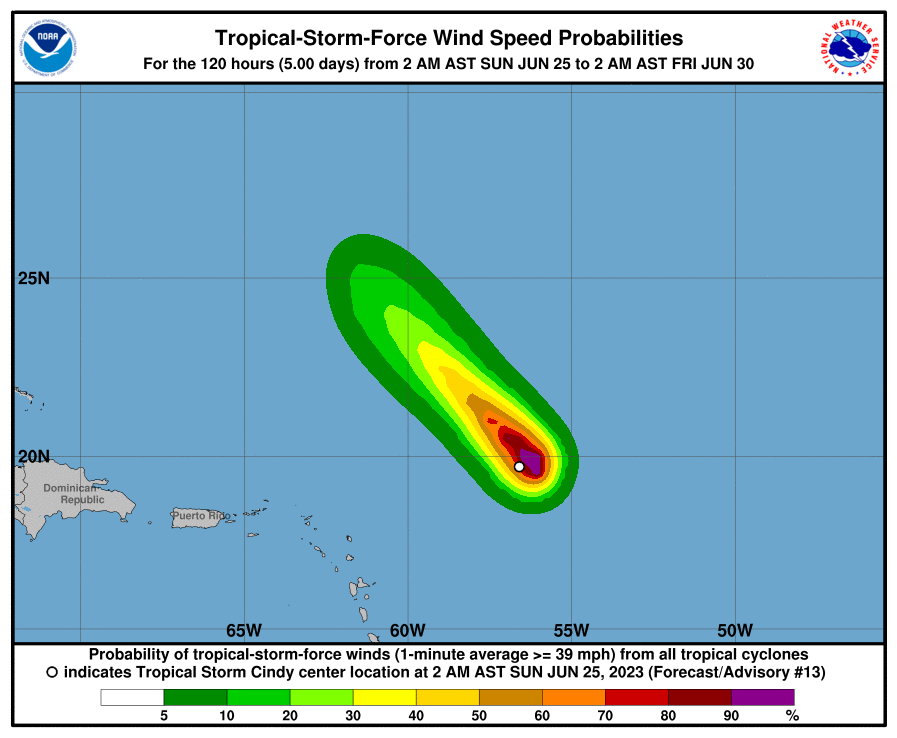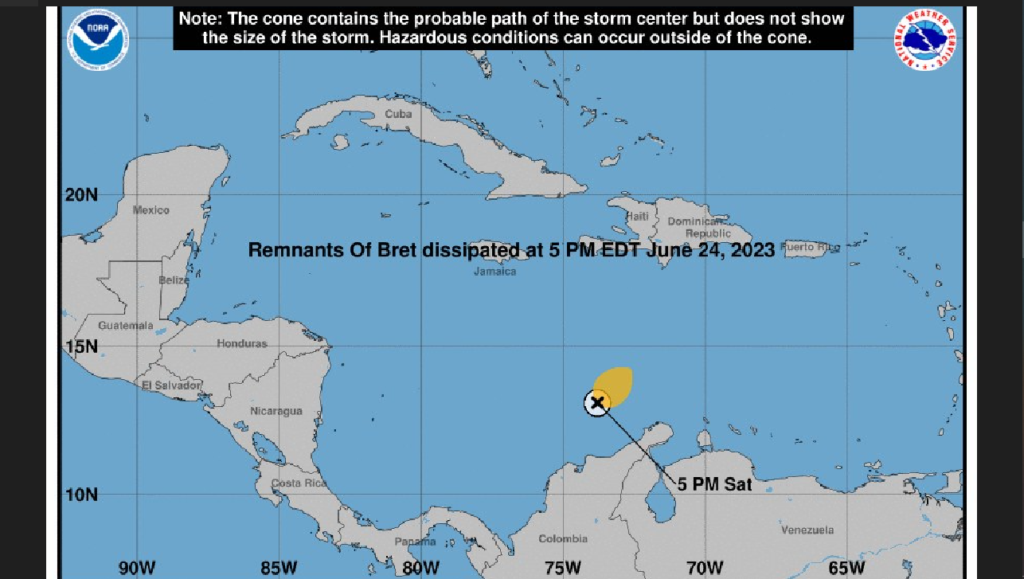SAN JUAN (Reuters) — Tropical Storm Bret dissipated as of the 5:00 p.m. advisory on Saturday, after first passing Aruba.
The remnants of Bret were 160 miles west-northwest of the northern tip of the Guajira Peninsula of Colombia.
Tropical Storm Cindy is moving toward the northwest near 21 mph, and a northwestward motion with a gradual decrease in forward speed is expected during the next couple of days, the National Hurricane Center said.

Maximum sustained winds are near 50 mph with higher gusts.
Meteorologists forecast some weakening during the next 48 hours, and Cindy could become a trough of low pressure by Tuesday. Tropical-storm-force winds extend outward up to 60 miles from the center.
Meanwhile, Bret continued its path through eastern Caribbean islands early Friday, striking the region with winds and heavy rain.

Early morning the storm reached Saint Vincent and the Grenadines with storm-force winds which extended outward up to 185 kilometers (115 miles) from the center, said the meteorological services of the island in a press release.
Bret had sent more than 120 people to shelters on Thursday, according to Myccle Burke, the chairman of the Agency for Public Information, who identified the environment as “extremely volatile,” adding that many people near the coastline had evacuated.
The St. Lucia government is also under hurricane watch and the government has asked residents to remain indoors until the all clear is given.

A number of public facilities were closed as Bret approached, with St. Lucia and Martinique shutting down schools and nurseries ahead of the arrival of one of the season’s first tropical storms, said Saint Lucian Prime Minister Philip Pierre.
On Thursday, the U.S. National Hurricane Center (NHC) had placed both eastern Caribbean islands under a tropical storm warning, and Barbados, Dominica and St. Vincent and the Grenadines under its watch area.
REUTERS
Reporting by Natalia Siniawski; Editing by Chizu Nomiyama
Our Standards: The Thomson Reuters Trust Principles.



